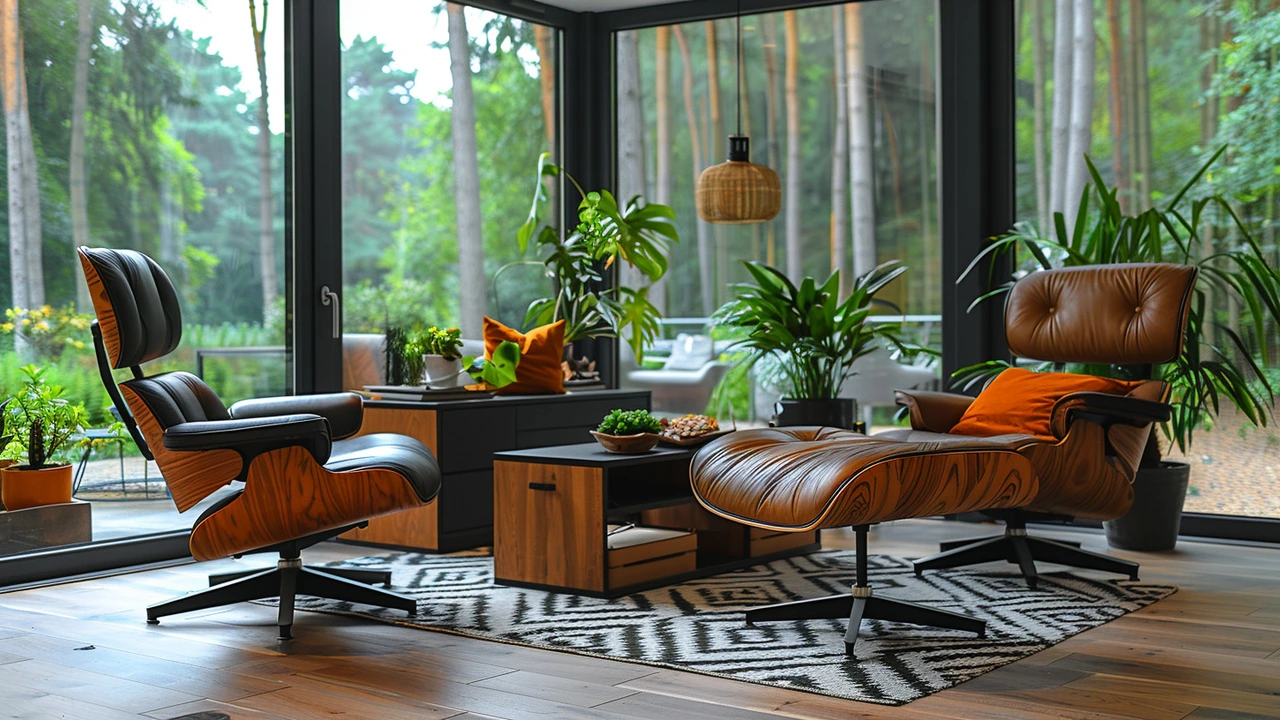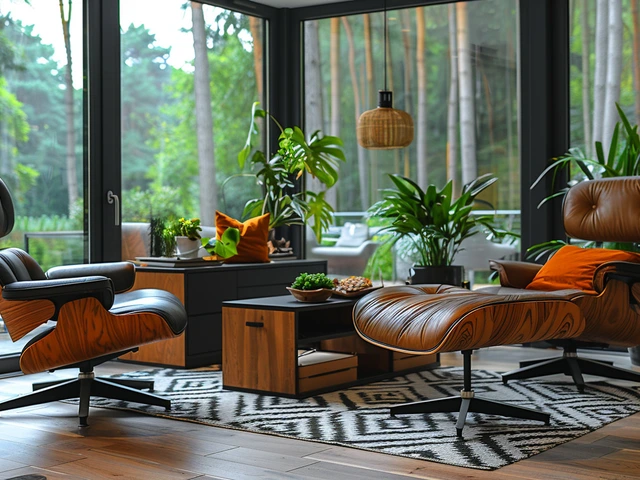The Historical Roots of Mid-Century Modern Style
The roots of the Mid-Century Modern movement trace back to the early 20th century, evolving from the principles of the Bauhaus school in Germany which advocated for the fusion of art, craft, and technology. This design philosophy spread across the world, influencing the aesthetic of the post-World War II era, particularly in America. The term 'Mid-Century Modern' itself wasn't widely used until Cara Greenberg coined it in her 1984 book, 'Mid-century Modern: Furniture of the 1950s', emphasizing its significance during the 1950s and 1960s. This period in design history is marked by a shift towards simplicity, functionality, and a connection with nature, reflecting society's post-war optimism and the era's technological advances.
Key Characteristics of Mid-Century Modern Design
What sets Mid-Century Modern design apart are its clean lines, organic forms, and emphasis on functionality. This style eschews excessive ornamentation in favor of a sleek, understated look. Furniture pieces are notable for their use of new materials like molded plastic, aluminum, and plywood, alongside traditional materials like wood, often showcasing exposed structures. The color palette is diverse, ranging from neutral to bold hues, and patterns are typically geometric or abstract. Large windows and open floor plans in architecture highlight the style's emphasis on bringing the outdoors in, fostering a seamless connection between interior and exterior spaces.
Influential Designers and Their Legacy
Mid-Century Modern design was shaped by a multitude of visionary designers. Charles and Ray Eames, Eero Saarinen, Harry Bertoia, and Isamu Noguchi are among the most celebrated, each contributing iconic furniture designs and architectural marvels. Charles and Ray Eames, for instance, are revered for their innovative use of plywood and fiberglass in furniture design, exemplified in their famous Eames Lounge Chair. Eero Saarinen's Tulip Table and Harry Bertoia's Diamond Chair are other examples of how individual creativity within the Mid-Century Modern ethos redefined traditional forms. These designers shared a common belief in the power of design to improve everyday life, a philosophy that continues to resonate.
Incorporating Mid-Century Modern Elements into Contemporary Spaces
Incorporating Mid-Century Modern elements into contemporary living spaces can breathe new life into interiors while paying homage to this influential era. Start with iconic furniture pieces as focal points, such as an Eames chair or a Saarinen table, to instantly elevate a space. Mixing and matching different pieces can add depth and interest. Consider incorporating the era's characteristic geometric patterns through wallpapers, rugs, or textiles. Lighting, an essential component of Mid-Century Modern design, can also make a significant impact. Choose fixtures with clean lines and organic shapes, like Sputnik chandeliers or Arco floor lamps, to complement the overall aesthetic. Finally, integrate plants and natural elements to emphasize the style's connection with nature.
The Impact of Mid-Century Modern Design on Contemporary Culture
Mid-Century Modern design's influence extends beyond furniture and interiors, permeating various aspects of contemporary culture, including fashion, graphic design, and even pop culture. Its enduring appeal lies in its simplicity, functionality, and timeless aesthetic, which resonate with today's minimalist trends. The style's impact is evident in the resurgence of vintage furniture markets and the growing popularity of Mid-Century Modern inspired collections in contemporary design. Moreover, its principles of sustainability and connection with nature align with current environmental concerns, making Mid-Century Modern more relevant than ever.
Preserving Mid-Century Modern Architecture
While furniture and interior design elements are key components of Mid-Century Modern style, its architectural achievements are equally significant. Iconic structures like the Eames House in Los Angeles and the Stahl House, also in Los Angeles, serve as testaments to the era's architectural innovation. Preservation efforts for these and other Mid-Century Modern buildings are crucial in maintaining the legacy of this golden age of design. Organizations and enthusiasts advocate for the protection of these structures, recognizing their cultural and historical importance. As we continue to draw inspiration from Mid-Century Modern design, preserving its architectural heritage becomes a vital part of honoring and understanding its impact.
Mid-Century Modern Today: A Revival or Continued Influence?
In recent years, we've witnessed a significant revival of interest in Mid-Century Modern design, leading some to wonder whether it's merely a trend or a testament to its lasting influence. While trends come and go, the principles of Mid-Century Modern design—simplicity, functionality, and a connection to nature—have timeless appeal. This resurgence reflects a broader craving for design that balances aesthetic appeal with practicality and sustainability. As we move forward, Mid-Century Modern continues to inspire designers and homeowners alike, proving that its principles are not only relevant but essential in today's world.
Conclusion
Exploring the world of Mid-Century Modern design reveals a rich tapestry of history, innovation, and enduring appeal. From its historical roots to its influential designers and architectural achievements, this golden age of design continues to captivate and inspire. By incorporating its elements into contemporary spaces, we not only pay tribute to this iconic era but also embrace a design philosophy that emphasizes simplicity, functionality, and harmony with nature. As we look to the future, the legacy of Mid-Century Modern design reminds us of the power of design to shape our lives and the spaces we inhabit.



Leave a Comments